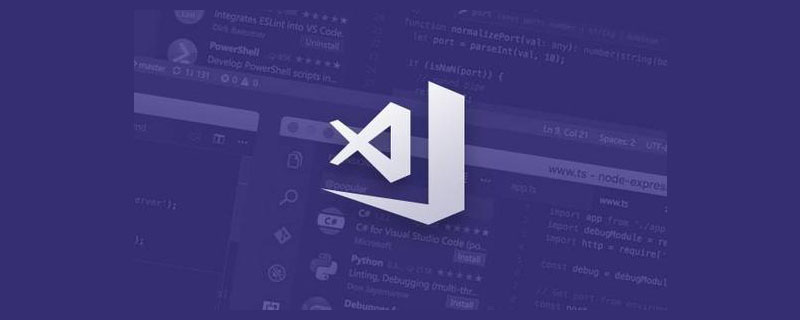With the development of the Internet era, more and more websites need to be launched quickly, requiring website managers to manage content simply and efficiently. Therefore, CMS (Content Management System) is becoming more and more important. PHP (Hypertext Preprocessor), as a popular programming language, is widely used in the development of CMS. This article will introduce the key links in developing CMS with PHP.
1. Data model design
In CMS development, the data model is a key link. The data model is a relationship diagram between data in the database, which is the skeleton of the entire website. Therefore, a reasonable data model design can reduce the amount of code development and improve website performance.
In PHP development of CMS, the data model involves two aspects: one is the entity relationship model (ERD), which describes the data structure of the website and the relationship between data elements; the other is database table design. It is a specific table structure design.
The design of the entity relationship model should be carried out according to different website requirements. It needs to take into account the data structure of the website, the relationship between data elements, the frequency of use, the number of visits and other factors. After the design of the entity relationship model is determined, the database table structure can be designed based on it and the relationships between the tables can be clarified.
2. Database optimization
When operating a large website, network load and traffic volume are both issues that need to be considered. Therefore, database optimization is a very important link in CMS development, which can make the website smoother and more efficient. Here are some suggestions on database optimization:
1. Reduce the number of queries: Read data from the database as little as possible, and store the data in memory through caching technology to reduce database load.
2. Use indexes: Indexes can improve query speed, but do not use indexes too much, otherwise it will reduce the performance of the database.
3. Standardized design: Website database needs to use standardized design, which can reduce the storage of duplicate data.
4. Use connection pool: Connection pool can reduce the number of database connections and operation and maintenance costs.
3. Coding style
Coding style is a very important link in code development. It can encourage developers to maintain good code specifications and formats in programming. This makes the code easier to maintain and extend, improving website performance. The characteristics of coding style include consistency, simplicity, readability, etc. Here are some suggestions about coding style:
1. Use comments: Comments can make it easier for other developers to read and understand the code.
2. Use variable names: Variable names should indicate the purpose and meaning of the variable and comply with unified naming rules.
3. Code indentation: Indentation can help read and understand the structure of the code.
4. Code reuse: Try to use code reuse technologies such as encapsulation and inheritance to reduce code duplication.
4. Security Design
Security design is an indispensable link in CMS development. It requires the flexible use of a variety of technologies to ensure the security of user data and website. Here are some suggestions on security design:
- Filter input data: avoid illegal input data and prevent SQL injection and cross-site scripting attacks.
- Prevent denial of service attacks: Prevent malicious attacks and maintain website stability through traffic control and network-level defense.
- Database security: Encryption technology is used to store sensitive information as appropriate to protect user data security.
- Code security: Do not store sensitive information such as passwords in the code, and control the visibility and modifiability of program permissions.
To sum up, the key links in developing CMS with PHP include data model design, database optimization, coding style, security design, etc. Only through the coordination and cooperation of all aspects and the use of appropriate technology can the CMS achieve higher efficiency and a good user experience. Only by handling these key links like this and developing an efficient, fast, compatible, safe and reliable CMS can we meet the needs of users and promote the development of the entire website.
The above is the detailed content of Introduction to key links in PHP development and CMS programming. For more information, please follow other related articles on the PHP Chinese website!
 微信小程序中PHP开发的翻页特效实现方法Jun 01, 2023 pm 01:51 PM
微信小程序中PHP开发的翻页特效实现方法Jun 01, 2023 pm 01:51 PM在微信小程序中,PHP开发的翻页特效是非常常见的功能。通过这种特效,用户可以轻松地在不同的页面之间进行切换,浏览更多的内容。在本文中,我们将介绍如何使用PHP来实现微信小程序中的翻页特效。我们将会讲解一些基本的PHP知识和技巧,以及一些实际的代码示例。理解基本的PHP语言知识在PHP中,我们经常会用到IF/ELSE语句、循环结构,以及函数等一些基本语言知识。
 微信小程序中PHP开发的常用工具库介绍Jun 01, 2023 pm 07:40 PM
微信小程序中PHP开发的常用工具库介绍Jun 01, 2023 pm 07:40 PM随着微信小程序的普及和发展,越来越多的开发者开始涉足其中。而PHP作为一种后端技术的代表,也在小程序中得到了广泛的运用。在小程序的开发中,PHP常用工具库也是很重要的一个部分。本文将介绍几款比较实用的PHP常用工具库,供大家参考。一、EasyWeChatEasyWeChat是一个开源的微信开发工具库,用于快速开发微信应用。它提供了一些常用的微信接口,如微信公
 如何利用PHP开发商城的满额赠礼功能May 22, 2023 am 10:02 AM
如何利用PHP开发商城的满额赠礼功能May 22, 2023 am 10:02 AM网上购物已经成为人们日常生活中不可或缺的一部分,因此,越来越多的企业开始关注电商领域。开发一款实用、易用的商城网站也成为了企业提高销售额、拓展市场的必要手段之一。在商城网站中,满额赠礼功能是提高用户购买欲望和促进销售增长的重要功能之一。本文将探讨如何利用PHP开发商城的满额赠礼功能。一、满额赠礼功能的实现思路在商城开发中,如何实现满额赠礼功能呢?简单来说就是
 微信小程序中PHP开发的加密和解密实现方法Jun 01, 2023 am 08:12 AM
微信小程序中PHP开发的加密和解密实现方法Jun 01, 2023 am 08:12 AM随着微信小程序在移动应用市场中越来越流行,它的开发也受到越来越多的关注。在小程序中,PHP作为一种常用的后端语言,经常用于处理敏感数据的加密和解密。本文将介绍在微信小程序中如何使用PHP实现加密和解密。一、什么是加密和解密?加密是将敏感数据转换为不可读的形式,以确保数据在传输过程中不被窃取或篡改。解密是将加密数据还原为原始数据。在小程序中,加密和解密通常包括
 微信小程序中PHP开发的滑动验证码实现方式Jun 01, 2023 pm 09:01 PM
微信小程序中PHP开发的滑动验证码实现方式Jun 01, 2023 pm 09:01 PM随着互联网的快速发展,网络安全问题也变得越来越严峻。针对恶意攻击、刷单等安全威胁,很多网站和应用程序都使用了验证码来保护用户信息和系统安全。在微信小程序中,如何实现一个安全可靠的滑动验证码呢?本文将介绍使用PHP开发的滑动验证码实现方式。一、滑动验证码的原理滑动验证码是指在验证用户身份时,通过用户在滑块上滑动完成验证过程。其原理是将一张图片分成两部分,一部分
 PHP开发中提供效率的VSCode插件推荐(值得收藏)Mar 30, 2021 pm 07:31 PM
PHP开发中提供效率的VSCode插件推荐(值得收藏)Mar 30, 2021 pm 07:31 PM本篇文章给大家推荐一些VSCode+PHP开发中实用的插件。有一定的参考价值,有需要的朋友可以参考一下,希望对大家有所帮助。
 微信小程序中PHP开发的文本框自动完成功能实现方法Jun 01, 2023 pm 07:42 PM
微信小程序中PHP开发的文本框自动完成功能实现方法Jun 01, 2023 pm 07:42 PM随着微信小程序的普及,各类开发需求也日渐增多。其中,文本框自动完成功能是小程序中常用的功能之一。虽然微信小程序提供了一些原生的组件,但是有一些特殊需求还是需要进行二次开发。本文将介绍如何使用PHP语言实现微信小程序中文本框自动完成功能。准备工作在开始开发之前,需要准备一些基本的环境和工具。首先,需要安装好PHP环境。其次,需要在微信小程序后台获取到自己的Ap
 微信小程序中PHP开发的自动更新方法Jun 01, 2023 pm 11:40 PM
微信小程序中PHP开发的自动更新方法Jun 01, 2023 pm 11:40 PM近年来,移动互联网的快速发展和移动终端的普及,让微信应用程序成为了人们生活中不可或缺的一部分。而在微信应用程序中,小程序更是以其轻量、快速、便捷的特点受到了广泛的欢迎。但是,对于小程序中的数据更新问题,却成为了一个比较头疼的问题。为了解决这一问题,我们可以使用PHP开发的自动更新方法来实现自动化数据更新。本篇文章就来探讨一下微信小程序中PHP开发的自动更新方


Hot AI Tools

Undresser.AI Undress
AI-powered app for creating realistic nude photos

AI Clothes Remover
Online AI tool for removing clothes from photos.

Undress AI Tool
Undress images for free

Clothoff.io
AI clothes remover

AI Hentai Generator
Generate AI Hentai for free.

Hot Article

Hot Tools

SublimeText3 Chinese version
Chinese version, very easy to use

MinGW - Minimalist GNU for Windows
This project is in the process of being migrated to osdn.net/projects/mingw, you can continue to follow us there. MinGW: A native Windows port of the GNU Compiler Collection (GCC), freely distributable import libraries and header files for building native Windows applications; includes extensions to the MSVC runtime to support C99 functionality. All MinGW software can run on 64-bit Windows platforms.

SAP NetWeaver Server Adapter for Eclipse
Integrate Eclipse with SAP NetWeaver application server.

Notepad++7.3.1
Easy-to-use and free code editor

mPDF
mPDF is a PHP library that can generate PDF files from UTF-8 encoded HTML. The original author, Ian Back, wrote mPDF to output PDF files "on the fly" from his website and handle different languages. It is slower than original scripts like HTML2FPDF and produces larger files when using Unicode fonts, but supports CSS styles etc. and has a lot of enhancements. Supports almost all languages, including RTL (Arabic and Hebrew) and CJK (Chinese, Japanese and Korean). Supports nested block-level elements (such as P, DIV),





